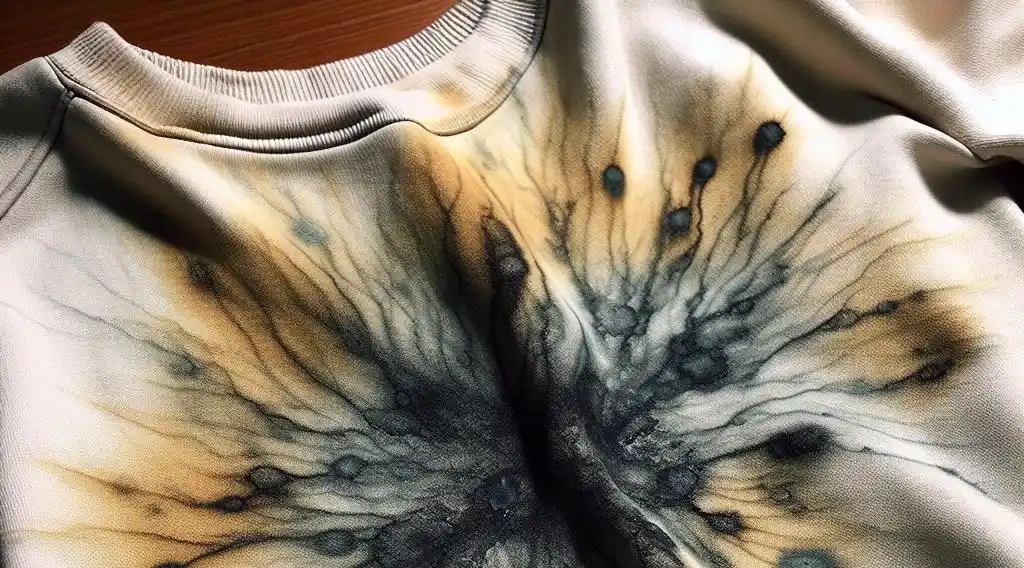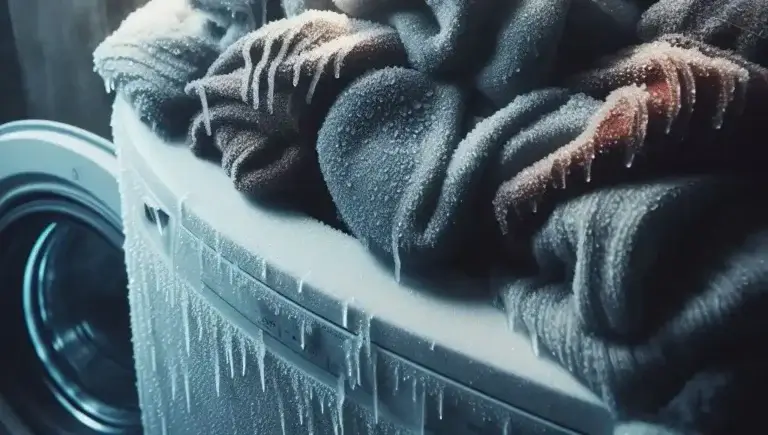How to Wash Toxins out of Clothes after Washing: How to Detox Your Wardrobe
Are you unknowingly exposing yourself to harmful chemicals every time you get dressed? Modern clothing production relies heavily on toxic chemicals and materials that can transfer to your skin. Detoxing your wardrobe is an important step to reducing your exposure to substances linked to health issues.
This comprehensive guide covers everything you need to know about how to wash toxins out of clothes after washing. You’ll learn:
- The most common chemicals found in clothing and how they impact health
- What fabrics tend to contain the highest levels of chemicals
- How to buy less toxic clothing going forward
- Tips for removing toxins from recently purchased and existing clothes
- Natural detergent and fabric softener alternatives to use
Table of Contents
Why You Need to Detox Your Wardrobe
The clothing industry relies heavily on toxic pesticides, dyes, water repellents, wrinkle treatments, and other concerning chemicals.
These substances don’t stay on the fabric exterior. Over time they can:
- Leach out in the wash
- Absorb into your skin with wear
- Linger in clothing despite repeated laundering
Long-term exposure has been linked to:
- Hormone disruption
- Developmental and reproductive damage
- Increased cancer risk
- Liver toxicity
- Kidney toxicity
- Neurotoxicity
Many substances found in clothes are considered hazardous waste. Yet they’re used on fabric you wear daily.
Detoxing helps remove residual treatment chemicals and reduces this constant low-level exposure.
The Most Common Problematic Substances in Clothing
Some of the top concerns when it comes to toxins in clothing include:
Formaldehyde
Formaldehyde is often used as a fabric finish, like wrinkle-free treatments. It helps prevent mildew and gives a crisp look.
The National Cancer Institute identifies formaldehyde as a known human carcinogen linked to certain cancers. Exposure has also been associated with asthma and other breathing issues.
Even small exposures over time raise concerns. A 2017 study found dressing in wrinkle-free clothes could expose you to levels that exceed exposure limits for workers dealing with formaldehyde.
Pesticides
Cotton uses more pesticides than any other crop. Large quantities of concerning pesticides get used to treat clothing fibers and materials, like cotton growth.
Pesticide exposure is linked to impaired fertility, hormone disruption, developmental disorders, and increased cancer risk.
The pesticides used in cotton growing often get washed into local waterways, harming wildlife.
Heavy Metals
Traces of concerning heavy metals like lead, mercury, cadmium, and chromium are frequently found in textile dyes and treatments. These metals are very toxic and can accumulate in the body over time.
Heavy metal toxicity is associated with neurological conditions, kidney damage, hormonal imbalances and cancer.
PFAS Chemicals
PFAS stands for per- and polyfluoroalkyl substances. This group of chemicals is used to create stain and water-repellent clothing.
PFAS chemicals break down very slowly which allows them to persist in the body and environment. Research has linked high exposure to liver toxicity, thyroid disease, and certain cancers.
Synthetic Fragrances
Artificial fragrances added to clothing can contain phthalates, synthetic musks and other ingredients linked to hormone disruption, asthma, and headaches.
Textile Dyes
Clothing dyes often contain free heavy metals, known carcinogens and sensitizing agents. Studies suggest certain reactive, disperse,d, and direct dyes are the most problematic for human health.
Clothing dye exposure has been associated with skin irritation, non-Hodgkin’s lymphoma, bladder cancer, and harm to the liver, blood, and neurological system.
How to Wash Toxins out of Clothes After Washing

We all want to feel confident and comfortable in our clothes, but did you know that many garments contain harmful toxins? These toxins can come from a variety of sources, including:
- Pesticides used in cotton farming
- Formaldehyde in wrinkle-resistant finishes
- Flame retardants
- Heavy metals in dyes
These toxins can irritate the skin, trigger allergies, and even disrupt hormones. While a regular wash cycle removes some of these toxins, it’s not always enough. Here are some additional steps you can take to detoxify your clothes:
Pre-washing:
- Soak new clothes in vinegar or baking soda. This will help neutralize formaldehyde and other chemicals used in fabric finishes.
- Wash clothes inside out. This will help protect the fabric from abrasion and reduce the leaching of chemicals.
- Use a natural laundry detergent. Avoid detergents with harsh chemicals, fragrances, and dyes. Look for brands that are certified organic or plant-based.
Washing:
- Use hot water (if the fabric can tolerate it). Hot water helps to remove more toxins than cold water.
- Add a natural booster. Baking soda, borax, or washing soda can help to boost the cleaning power of your detergent and neutralize odors.
- Double rinse. This will help to remove any residual detergent and toxins from the fabric.
Drying:
- Line-dry your clothes whenever possible. Sunlight can help to break down and degrade some toxins.
- Avoid using dryer sheets. Dryer sheets are often coated in chemicals that can re-contaminate your clothes.
Beyond the Wash:
- Store clothes in a cool, dry place. Heat and moisture can cause toxins to leach out of fabrics.
- Rotate your wardrobe regularly. Don’t wear the same clothes day after day. This will give them a chance to air out and release any trapped toxins.
- Invest in organic or sustainably made clothing. When it’s time to replace your clothes, opt for organic or sustainably made options that are less likely to contain harmful toxins.
Additional Tips:
- Wash your hands after handling dirty laundry.
- Wear gloves when you’re washing clothes by hand.
- Be aware of the “new clothes smell.” This is often a sign of formaldehyde and other chemicals. Wash new clothes before wearing them.
By following these tips, you can help to reduce your exposure to toxins in your clothes and create a healthier wardrobe for yourself and your family.
Remember, even small changes can make a big difference. By taking steps to detoxify your clothes, you’re protecting your health and the environment.
Which Fabrics Tend to Contain the Most Chemicals?

Some types of textiles tend to harbor higher levels of concerning chemicals than others due to differences in production methods and materials used:
Conventional Cotton
Cotton uses more pesticides by volume than any other crop. It also often gets treated by formaldehyde and other substances for a wrinkle-free effect.
Unless specified otherwise, cotton clothing likely contains traces of many potentially toxic substances that transfer through wearing and washing.
Synthetic Fabrics
Microfibers shedded from synthetic materials are an emerging health concern. These tiny plastic-like fragments have been found in alarming levels in waterways and seafood. Research suggests microfiber exposure contributes to health issues tied to plastic exposure.
In addition, chemicals like formaldehyde often get added to synthetic materials for desired properties like wrinkle- and static-resistance. Studies suggest formaldehyde emissions increase as synthetics like polyester age.
Common synthetic fabrics include: polyester, nylon, acrylic, spandex and rayon.
Conventional Wool and Silk
Wool and silk production often involves pesticide dipping, which leaves residue. Mulesing is also common with wool, which leads to contamination by feces, dirt and debris. Harsh bleach and dyeing processes further add to the chemical burden.
Unless specified as organic, wool and silk likely undergo chemical processing.
How to Buy Less Toxic Clothing
The most sustainable way to avoid toxins in clothes is to purchase less clothing overall. Consider shifts like buying gently used, choosing quality pieces you’ll wear for years, and switching to natural detergents.
When you do need new items, looking out for these labels can help you identify less toxic options:
1. Organic Cotton
Organic cotton has strict regulations to ensure no toxic pesticides or GMOs get used in production. Clothing made with organic cotton contains far fewer chemical residues.
When you see a 100% organic cotton tag it means:
- No synthetic pesticides or fertilizers were used to grow the crop
- No GMOs were used
- No chlorine bleach or formaldehyde during processing
Organic cotton may cost more upfront but the investment pays dividends for your health and the health of farm workers and local communities.
2. OEKO-TEX Standard 100
OEKO-TEX is an independent testing system focused on textile safety. When you see an OEKO-TEX 100 certified label it means the item has passed strict limits for over 100 potentially harmful substances.
This label helps provide assurance regarding chemicals regulated by OEKO-TEX. However, it’s important to note it does not cover all chemicals that may be present.
3. GOTS Certification
GOTS stands for Global Organic Textile Standard. This premium certification ensures the item meets high percentage organic components without exceptions:
- 95% organic fibers for clothing
- 70% organic fibers for home textiles
GOTS tracks products across the entire supply chain, from farm to finished item. It offers more assurances than organic or OEKO-TEX alone. However, GOTS clothing tends to be more expensive due to the strict criteria.
How to Remove Toxins from Your Current Wardrobe
Now that you know why detoxing clothes matters, let’s talk about how to actually wash toxins out after buying clothes and wearing items you already own.
Follow these tips for removing pesticides, formaldehyde and other problematic substances that may lurk in your wardrobe:
Wash New Clothing Multiple Times Before Wearing
Chemical residues in clothing are highest when new. Simply leaving tags on and storing clothes allows toxins like formaldehyde to continue off-gassing.
Washing brand new clothes multiple times helps dissolve and rinse away treatments and chemicals left over from manufacturing.
Use Detergent Alternatives
Skip the conventional laundry detergents, which simply add more synthetic fragrance and chemical residue back onto clothes. Instead, choose alternative cleansing options that let fabrics release toxins without leaving a chemical burden behind.
Great options include:
- Baking Soda: Add 1 cup baking soda to the wash cycle as a gentle cleanser and odor neutralizer
- White Vinegar: Use 1 cup white vinegar as a degreaser, odor remover and mild disinfectant
- Soap Nuts: These fruit shells offer cleansing power without chemicals
- Castile Soap: Look for unscented castile soap with few ingredients
Skip Fabric Softener
Fabric softeners and dryer sheets coat clothing in a chemical film for softness and static reduction. But that coating gets transferred to your skin with wear and reapplied over time.
That chemical layer seals residue in rather than allowing true washing out. Avoid fabric softeners altogether or try alternative options like white vinegar or wool dryer balls.
Check Clothing Tags
Closely check clothing tags for warnings related to chemical residues that may require special washing.
Some tags may specify to wash before wearing or provide other handling guidelines for pesticide residues or wrinkle treatments. Follow all instructions for maximum removal.
Wash in Very Hot Water
When trying to purge toxins from clothing, wash in the hottest water listed safe for that item. Some clothing tags say wash warm or delicate dry clean only. But if an item can tolerate it, choose hot.
Heat helps dissolve chemical buildup so it can rinse away rather than locking it into fabric.
Use Extra Rinse Cycles
After washing clothes in hot water with baking soda or soap nuts, be sure to use multiple rinse cycles. This helps ensure any loosened residue gets flushed away rather than reabsorbed into fabric during drying.
Air Dry Clothing
Skip the dryer when trying to detox clothing. Heat from dryers causes chemical reactions that bind residue to fabric, limiting true washing out. Air drying avoids this issue altogether.
Store Clothing Safely
Avoid plastic bins, plastic wrap covering or non-breathable storage bags. These create toxicity concerns over time and prevent chemicals from off-gassing.
Instead, use breathable, non-treated hangers and garment bags made from unbleached cotton or hemp. These allow clothing to air out while preventing excessive dust and dirt build up.
Consider Dry Cleaning Alternatives
Standard dry cleaning relies on the chemical perchloroethylene, a neurotoxin and suspected carcinogen according to EPA studies. Avoid regular dry cleaning when possible.
If an item requires special cleaning, seek out green dry cleaners that use less toxic methods. Some cleaners have switched to liquid C02, vegetable oil soap, water or other greener options.
Ask upfront what solvents and process your local cleaner uses. Or hand wash delicates at home using mild castile soap in cool water.
Natural Laundry Routine for Less Toxic Clothing
Once you’ve prepped your clothing, adopting a non-toxic laundry routine moving forward helps avoid adding future chemical exposures back in.
Follow these steps for clean clothing without the chemical residue:
1. Shake Items Out Thoroughly Before Washing: Shake clothing, towels and linens outside so any loose debris falls off. This decreases the overall dirt or chemicals released into waterways.
2. Use a Gentle Wash Cycle: Choose regular or delicate cycles, which use lower water temperatures and less agitation. This preserves clothing condition instead of breaking down fibers quickly.
3. Wash Full Loads: Maximize your machine space each cycle to conserve water and energy usage. Wait until you have enough laundry built up for a full load.
4. Use Alternative Cleansers: Use options like baking soda, castile soap or soap nuts instead of conventional detergents with synthetic chemicals added. Vinegar also works well.
5. Add One Cup White Vinegar During Rinse: Vinegar helps balance pH levels to preserve clothing material and integrity. It serves as a natural water softener and degreaser. The acidic environment makes it tough for mold and mildew to take hold.
6. Use Extra Rinse Cycles: Choose multiple cold water rinse cycles to help flush away any remaining residue. Avoid using hot water for rinsing since heat binds residue to fabric.
7. Line Dry Clothing: Skip the dryer and allow items to line dry in fresh air whenever possible. This avoids further heat damage and prevents chemical cross-contamination between loads. For items prone to wrinkling, gently tug back into shape while still slightly damp.
8. Lightly Press With Cool Iron if Needed: For clothing prone to wrinkling, use gentle heat and minimal pressure from an cool iron. Avoid high heat, which can cause chemical reactions binding residue to fabric rather than removing it.
FAQs
How many times should you wash new clothes before wearing them?
Wash brand new clothing 2-3 times prior to first wear whenever possible. Initial chemical levels are highest on never worn items straight from factories. Remove tags right away and handle carefully to avoid contamination.
Does washing clothes remove all chemicals?
While washing clothing helps purge residues, it virtually never removes 100% of chemicals, dyes and fabric treatments. However, studies show levels drop substantially with repeat washing. The more you wash new and existing items with alternatives like baking soda and vinegar, the lower your exposure will be.
What temperature removes chemicals from clothes?
Very hot water paired with high efficiency detergents does the best job removing soluble residues. However, excess heat risks fading some clothing. Weigh the trade offs of preserving clothing quality vs removing chemicals. When trying to strip residues, opt for the hottest setting safe for that item.
Should clothes smell after washing?
Clothes freshly washed without chemical detergents or fragrance should not smell. If a smell persists even after multiple hot vinegar rinses, residues may remain bound to fabric. Try alternate methods like soaking in baking soda and vinegar solution to help break bonds and lift odors.
How do you get formaldehyde out of clothes?
Formaldehyde binds tightly and can be difficult to remove from treated clothing. Washing alone often fails to eliminate it fully. Combining alternatives like baking soda, vinegar, and hot water cycles may help lift some residue. But for those sensitive to formaldehyde, avoiding purchasing wrinkle-free clothing is best. Seek out labels like GOTS that prohibit use in production.
Do you wash clothes inside out?
Yes, turn clothing inside out before washing, especially new items. This exposes deeper residue within the fabric to washing action rather than solely rinsing exterior layers. Carefully handling inside out also avoids contamination from dirt and chemicals transferred from hands or other garments.
Pay special attention to areas like collars and cuffs, where body oils and residues concentrate heavily.
The Bottom Line
The clothing industry’s heavy reliance on pesticides, synthetic dyes, and wrinkle/stain treatments means toxicity issues are rampant. Investing in organic and sustainably produced natural fiber clothing is ideal for avoiding exposure from the start.
But you likely have existing clothing containing chemicals that transfer to the skin over short and long-term wear. Take steps to reduce this load like:
- Washing brand new clothes multiple times before wearing
- Using alternatives like baking soda and vinegar instead of detergent
- Skipping fabric softener and dryer sheets altogether
- Line drying clothing and storing it properly
Implementing a non-toxic wardrobe and laundry routine pays dividends both for your personal health and for positive impacts along every link of the supply chain.








